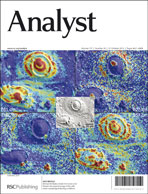Rapid screening of five phthalate esters from beverages by ultrasound-assisted surfactant-enhanced emulsification microextraction coupled with gas chromatography
Abstract
A rapid ultrasound-assisted surfactant-enhanced emulsification microextraction (UASEME) method coupled with gas chromatography-flame ionization detection (GC-FID) is proposed for the rapid screening of five phthalate esters in bottled beverages. In the UASEME procedure, a nonionic surfactant (Triton X-100) was used as the emulsifier, without application of any organic dispersive solvents typically required in dispersive liquid–liquid microextraction. Triton X-100 as the emulsifier accelerated the formation of fine droplets from the extraction solvent in the sample solution under ultrasound radiation, thus combining the advantages of dispersive liquid–liquid microextraction (DLLME) and ultrasound-assisted emulsification microextraction (UAEME). Under the optimum conditions, the enrichment factors of the five analytes ranged from 230 to 288 fold and the recoveries ranged from 89.3% to 100.1%. The limits of detection (LODs) based on signal to noise of 3 were 0.41–0.79 μg L−1. Intra-assay and inter-assay precision, expressed as the relative standard deviation (RSD), were ≤5.46% and 5.81%, respectively. The proposed UASEME-GC/FID method was demonstrated to be simple, practical and environmentally friendly for the determination of trace phthalate esters in beverage samples.


 Please wait while we load your content...
Please wait while we load your content...